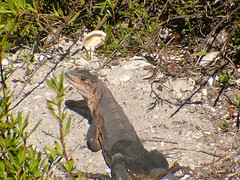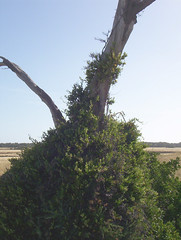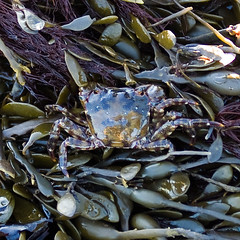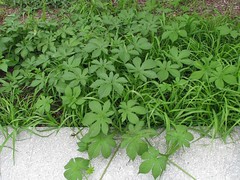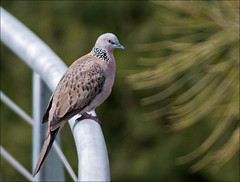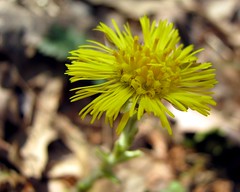(Psst! Read through to the end to find out about the contest!)
A few months ago I had the opportunity to interview Dave Kellam, creator of what is perhaps the most noteworthy use of an invasive species that I have ever seen: The Phragwrites. Phragwrites are pretty much what you would expect given the name, half pen, half reed hybrids made using the stems of the common reed (Phragmites australis). In the interest of full disclosure, Dave contacted me about a year ago, offering to send me some free samples, and I said "Yes!"...but it was my idea to phone him for an interview.
Dave got his inspiration for the pens through his work as an aquatic resource manager in New Hampshire. He spends much of his time on the coast, where there is plenty of Phragmites to be had. On a roadside walk by a Phragmites patch, Dave broke off a stem, and while admiring the perfect, tapered tube, was "struck by how perfect it would be in manufacturing." After fiddling around with the stem back in the office, he jokingly stuck part of a pen in a stalk, and the concept of a "Phragwrites" was born.
Following a challenge from a colleague in early 2007 to actually implement one of the creative projects he was always imagining, Dave took Phragwrites to the next level, going through the official permitting process required to collect an invasive species in New Hampshire. Dave notes that he didn't have much trouble getting the permit, since harvesting dried Phragmites stems is a "low impact process" that made it easy to avoid spreading the invader. With permit in hand, Dave began production on the first generation of Phragwrites pens. Over the past year, I have followed Dave's progress and observed the morphing of these pens into a variety of plain and fancy styles. I have to say I am impressed by the care and attention to detail that Dave gives to every part of the process, from the collection of materials (he had no problem with my probing questions about how he avoids spreading the plant :-)) to the design of the pens in a way that creates as little waste as possible yet still maintains an aesthetic appeal:

Perhaps the best part about the Phragwrites project is that Dave pledges to give ten percent of his profits to organizations that manage invasive species, and he lets his customers nominate potential recipients and vote for each year's winner. He even made a small donation last year, though he did not make a profit.
The original target audience was "people battling the stuff," but there are now hotel chains and universities expressing an interest in the Phragwrites as a green alternative to the standard pen. Dave notes that right now, sales are so good that "production is the limiting factor," and has been making an effort to invest in equipment to allow him to make pens even faster.
While Dave is happy to have found a use for this invasive weed, he is well aware of the problems it causes, and insists he "would be happy to be put out of business" if it ever were eradicated. In the meantime, though, he has been toying with some new ideas for how to put the stems of bittersweet and Japanese knotweed to good use...
I hope you enjoyed reading this post, which marks the
6-year Bloggiversary of the Invasive Species Weblog!
To celebrate, I'm giving away prizes, including a genuine Phragwrites pen and an item of your choice from the ISW store. To enter, email one of the following to invasiveblog AT knottybits DOT com:
- A blog post about invasive species, written by you no earlier than today, 4/13/08.
- A news story about invasive species that you think would make a great post here on the ISW.
Deadline for entries is April 30, 2008.
